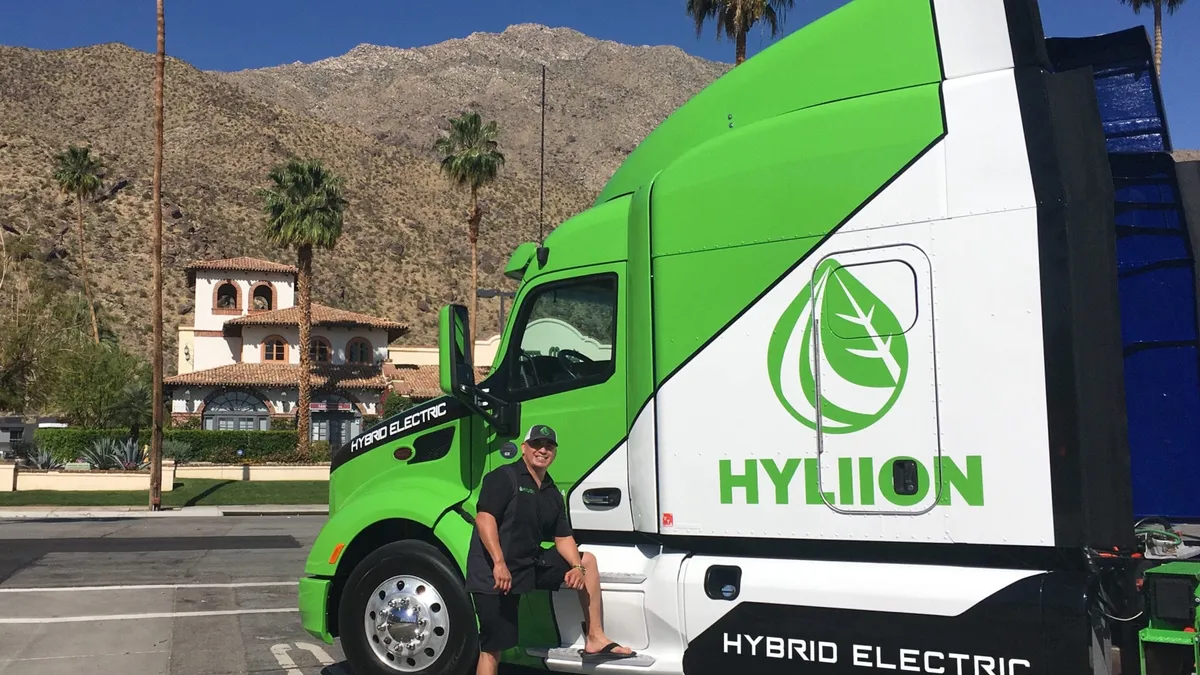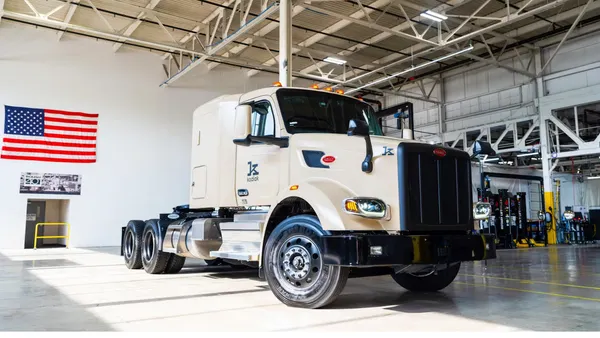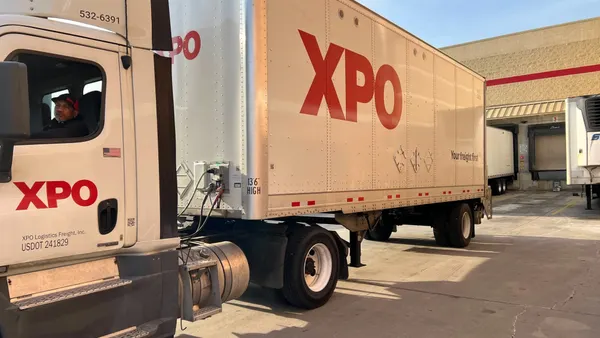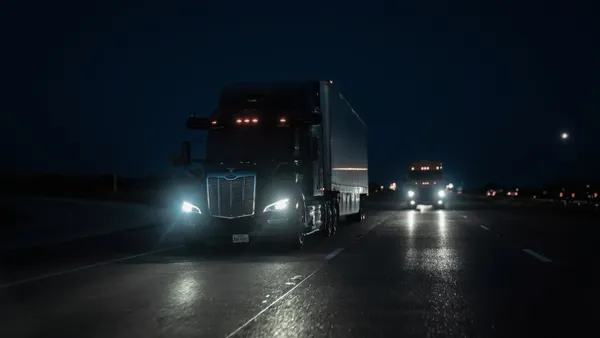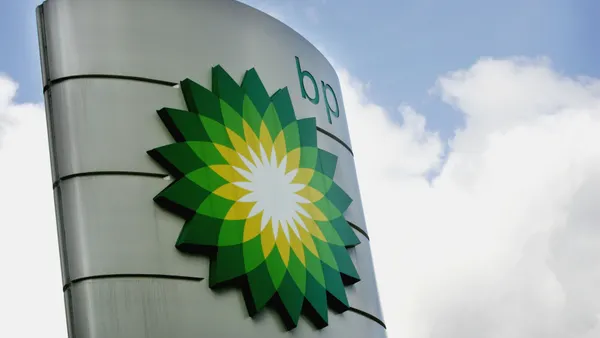Dive Brief:
- Hyliion, an electrified powertrain company that specializes in upgrading Class 8 trucks, will become a publicly traded company by merging with Tortoise Acquisition, an acquisition firm focused on green commercial transportation.
- The announcement follows a similar and recent path taken by Nikola's March 3 merger with VectoIQ. Nikola agreed to merge with the acquisition company to create a company focused on the development of zero-emission trucks. The new company remained NASDAQ-listed under a new ticker symbol, "NKLA." Nikola began trading as such on June 4.
- The reverse merger will help Hyliion raise $560 million in funding while allowing it to become publicly traded faster than the traditional IPO route, Thomas Healy, Hyliion founder and CEO, told Transport Dive in an interview Tuesday. The company makes a diesel hybrid upgrade for any Class 8 truck, and plans a 2022 rollout of the Hypertruck ERX, an electric truck which has not been unveiled at trade shows.
Dive Insight:
Vince Cubbage, Tortoise CEO and chairman, said in a news release that Tortoise evaluated more than 200 companies "looking for the ideal opportunity." Tortoise chose Hyliion because the technologies being worked on could "significantly reduce emissions and contribute to a cleaner energy future."
Hyliion needed investment, so it looked at all paths, from staying private to a traditional IPO. Healy said a top reason for a "reverse triangular merger," as he calls it, was it allowed a quick transformation of a new firm into a publicly traded company, landing hundreds of millions of dollars into the firm, and freeing up time afterward to take the new capital and move the products into high-volume manufacturing.
Hyliion uses some fossil fuels in two of its models. In the hybrid model, either natural gas or diesel can be used. The hybrid design allows OEMs or fleets to install it on Class 8 trucks, "agnostic" to brand and engine type. Hyliion, founded in 2015, has shipped about 20 units for such fittings. The other product is the Hypertruck ERX, a full powertrain being developed for OEMs. It uses natural gas to create electricity and charge the batteries. The use of a fossil fuel for the Hypertruck ERX is similar to the key vulnerability of electric cars and trucks, which have to plug into the grid, a grid still largely powered in America by fossil fuels.
"It's like an electric truck but the only difference is opposed to plugging it into the grid to get recharged, you are filling it up with natural gas and bringing the fuel with you," Healy told Transport Dive.
The economics of electricity is what makes the Hypertruck ERX attractive, Healy said.
"We can produce electricity for about 30% less than you can buy electricity off the grid," said Healy. "When you get to those sort of economics, it starts to beg the question, well, why would you ever go with a full electric truck when you can just make the electricity on the truck for less?"
Battery-electric vehicles (BEVs) and fuel-cell electric vehicles (FCEVs) are getting much attention from fleets, which are being pressured by the federal government to cut emissions. But BEVs and FCEVs are expensive and get subsidies, Healy said, and his models do not. Healy said his models are cheaper than both EVs and BCEVs to buy and maintain, he said. Plus, the two products can show fuel savings to fleets, he said.
Correction: This story has been changed to accurately reflect the savings when producing electricity is 30% less than buying off the grid.


